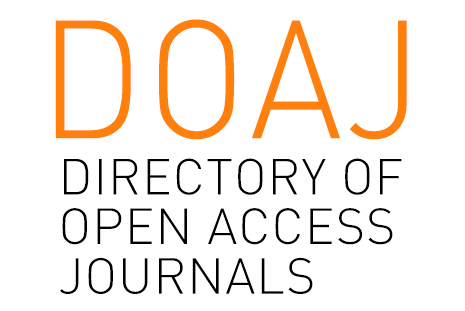Aplicativo para integração de prontuário de saúde: uma proposta para micromunicípios
Application for health record integration: a proposal for micro-municipalities based on literature
DOI:
https://doi.org/10.17765/2176-9206.2025v18e12898Palavras-chave:
Saúde pública, Saúde coletiva, Aplicativo, ProntuárioResumo
Os prontuários de saúde desempenham um papel essencial na organização dos serviços de saúde e na qualidade do atendimento público. A integração informatizada desses prontuários pode trazer benefícios significativos para o setor. Objetivo: Apresentar uma proposta de sistema informatizado para a integração de prontuários de saúde no atendimento público, com base em revisão bibliográfica. Método: Foi realizada uma revisão integrativa da literatura para fundamentar a proposta. Resultados: com base na revisão, foi possível propor uma arquitetura unificada baseada em nuvem e micro serviços otimiza a gestão do sistema de saúde, garantindo escalabilidade, flexibilidade e interoperabilidade, promovendo integração eficiente entre provedores, pacientes e governo, atendendo às demandas de um sistema em constante evolução. Conclusões: A integração de prontuários de saúde é viável e apresenta potencial para aumentar a assertividade, rapidez e eficiência nos serviços de saúde, destacando sua importância na prática clínica e na gestão de saúde pública.
Downloads
Referências
1. Bates D. W. A importância da integração de dados na saúde. Rev Bras Inform Saúde. 2020;14(2):45-52.
2. Carvalho G. A saúde pública no Brasil. Estud Av. 2013;27:7-26. Disponível em: https://doi.org/10.1590/S0103-40142013000200002
3. Sampaio CSJC. Otimização do e-SUS para profissionais da Atenção Primária à Saúde. Ribeirão Preto; 2017. Disponível em: https://www.teses.usp.br/teses/disponiveis/22/22132/tde-29112017-193221/publico/CAMILASANTANAJUSTOCINTRASAMPAIO.pdf
4. Palomares MLE, Marques IR. Contribuições dos sistemas computacionais na implantação da sistematização da assistência de enfermagem. J Health Inform. 2010 jul-set;2(3):78-82. Disponível em: https://jhi.sbis.org.br/index.php/jhi-sbis/article/view/94/34
5. Mendes E, et al. Revisão integrativa: método de pesquisa para a incorporação de evidências na saúde e na enfermagem. Texto Contexto Enferm [Internet]. 2018;17(4):758-64. Disponível em: https://doi.org/10.1590/S0104-07072008000400018
6. Toledo PPS, et al. Prontuário Eletrônico: uma revisão sistemática de implementação sob as diretrizes da Política Nacional de Humanização. Ciênc Saúde Colet. 2021;26(6):2131-2140. Disponível em: https://docs.bvsalud.org/biblioref/2022/01/1278739/pt.pdf
7. Patrício CM, et al. O prontuário eletrônico do paciente no sistema de saúde brasileiro: uma realidade para os médicos? Sci Med. 2011 jul-set;21(3):121-31. Disponível em: https://revistaseletronicas.pucrs.br/ojs/index.php/scientiamedica/article/view/8723/6723
8. Gonçalves JPP, et al. Prontuário Eletrônico: uma ferramenta que pode contribuir para a integração das Redes de Atenção à Saúde. Saúde Debate. 2013;37(96):43-50. Disponível em: https://www.scielo.br/j/sdeb/a/xLMq3HyhgqNwhX6y3jjpNff/?lang=pt
9. Câneo PK, Rondina JM. Prontuário Eletrônico do Paciente: conhecendo as experiências de sua implantação. J Health Inform. 2014 abr-jun;6(2):67-71. Disponível em: https://jhi.sbis.org.br/index.php/jhi-sbis/article/view/289/197
10. Santos MC, Marin HF. Análise do uso de um sistema informatizado por gestores hospitalares. Acta Paul Enferm [Internet]. 2018. Disponível em: https://doi.org/10.1590/1982-0194201800002
11. Sato APS, et al. Use of electronic immunization registry in the surveillance of adverse events following immunization. Rev Saúde Pública. 2018;52. Disponível em: https://doi.org/10.11606/S1518-8787.2018052000295
12. Silva AB, et al. Registro eletrônico de saúde em hospital de alta complexidade: um relato sobre o processo de implementação na perspectiva da telessaúde. Ciên Saúde Colet. 2019;24(3):1133-1142. Disponível em: https://doi.org/10.1590/1413-81232018243.05982017
13. Ávila GS, et al. Difusão Do Prontuário Eletrônico Do Cidadão Em Equipes De Saúde Da Familia. Reme: Rev. Min. Enferm. 2021;25
14. Gomes DS, et al. Influências dos canais de comunicação, sistema social e tempo na difusão do prontuário eletrônico do cidadão no Brasil. Rev Cuba Inf Cienc Salud. 2021;32(4). Disponível em: http://scielo.sld.cu/scielo.php?script=sci_arttext&pid=S2307-21132021000400003&lng=es&nrm=iso [acesso em 21 set 2023].
15. Viola CG. Construção e validação de um instrumento para análise do Prontuário Eletrônico do Cidadão da Estratégia e-SUS Atenção Básica. Ribeirão Preto; 2019. Disponível em: https://teses.usp.br/teses/disponiveis/22/22133/tde-23102019-170743/publico/CAROLINAGRIGOLATOVIOLA.pdf
16. Santos LPR, et al. e-SUS AB na cidade do Rio de Janeiro: projeto e implantação do sistema de informação em saúde. Cad Saúde Coletiva. 2021;29:199-204. Disponível em: https://doi.org/10.1590/1414-462X202199010232
17. Schloeffel P, et al. The relationship between CEN 13606, HL7, and openEHR. In: HIC; 2006; Sydney, Australia. Johanna Westbrook & Joanne Callen (Eds).
18. Ricarte ILM. Percepções de privacidade em sistemas nacionais de prontuários eletrônicos: o caso australiano. Rev Cuba Inf Cienc Salud. 2020;31(1). Disponível em: http://scielo.sld.cu/scielo.php?script=sci_arttext&pid=S2307-21132020000100005&lng=es&nrm=iso
19. Coelho GC, Andreazza R, Chioro A. Integration among national health information systems in Brazil: the case of e-SUS Primary Care. Rev Saúde Pública. 2021;55:93. Disponível em: https://doi.org/10.11606/s1518-8787.2021055002931
20. Cunha FJAP. A gestão da informação nos hospitais: importância do prontuário eletrônico na integração de sistemas de informação em saúde. Salvador; 2005. Disponível em: https://repositorio.ufba.br/handle/ri/8174
21. Gröne O, Garcia-Barbero M. Integrated care: a position paper of the WHO European Office for Integrated Health Care Services. Int J Integr Care. 2001;1. Disponível em: https://doi.org/10.5334/ijic.131
22. Leichsenring K. Developing integrated health and social care services for older persons in Europe. Int J Integr Care. 2004;4. Disponível em: https://doi.org/10.5334/ijic.118
23. Sagar SM. Integrative oncology in North America. J Soc Integr Oncol. 2006;4(1):27-39.
23. Cash-Gibson L, Rosenmoller M. Project INTEGRATE-a common methodological approach to understand integrated health care in Europe. Int J Integr Care. 2014;14. Disponível em: https://doi.org/10.5334/ijic.1543
25. Stark Z, et al. Integrating genomics into healthcare: a global responsibility. Am J Hum Genet. 2019;104(1):13-20.
26. Abulatif LI. Processo de integração de dados - um modelo de gestão da informação para múltiplas bases de dados de acidentes de trânsito no Brasil. Epidemiol Serv Saúde [Internet]. 2018;27(2). Disponível em: https://doi.org/10.5123/S1679-49742018000200018
27. Tomazelli JG, Girianelli VR, Silva GAE. Estratégias usadas no relacionamento entre Sistemas de Informações em Saúde para seguimento das mulheres com mamografias suspeitas no Sistema Único de Saúde. Rev Bras Epidemiol. 2018. Disponível em: https://www.scielo.br/j/rbepid/a/MSjzSVfBmYLb6vFSvV8xMzB/?lang=pt#ModalHowcite
28. Maia LTS, et al. Use of linkage to improve the completeness of the SIM and SINASC in the Brazilian capitals. Rev Saúde Pública. 2017;51. Disponível em: https://doi.org/10.11606/S1518-8787.2017051000431
29. Coelho GC, Chioro A. Afinal, quantos Sistemas de Informação em Saúde de base nacional existem no Brasil? Cad Saúde Pública. 2021;37(7). Disponível em: https://doi.org/10.1590/0102-311X00182119
30. IBGE. Censo de 2022. IBGE; 2022. Disponível em: https://censo2022.ibge.gov.br/panorama/
31.IBGE. IBGE propõe debate de nova classificação para os espaços rurais e urbanos. Agência IBGE de Notícias. 2017. Disponível em: https://agenciadenoticias.ibge.gov.br/agencia-sala-de-imprensa/2013-agencia-de-noticias/releases/15003-ibge-propoe-debate-de-nova-classificacao-para-os-espacos-rurais-e-urbanos
32. Dias RDM. Modelagem do padrão TISS por meio do enfoque dual da Fundação openEHR. Rio de Janeiro; 2019. Disponível em: https://www.bdtd.uerj.br:8443/handle/1/8568
33. Ávila GS, et al. Difusão do prontuário eletrônico do cidadão em equipes de saúde da família. REME Rev Min Enferm. 2021;25(1). Disponível em: http://www.revenf.bvs.br/scielo.php?script=sci_arttext&pid=S1415-27622021000100235&lng=pt&nrm=iso
Downloads
Publicado
Como Citar
Edição
Seção
Licença
Copyright (c) 2025 Saúde e Pesquisa

Este trabalho está licenciado sob uma licença Creative Commons Attribution 4.0 International License. A submissão de originais para a revista Saúde e Pesquisa implica na transferência da Carta Concessão de Direitos Autorais, pelos autores, dos direitos de publicação digital para a revista após serem informados do aceite de publicação.
A Secretaria Editorial irá fornecer da um modelo de Carta de Concessão de Direitos Autorais, indicando o cumprimento integral de princípios éticos e legislação específica. Os direitos autorais dos artigos publicados nesta revista são de direito do autor, com direitos da revista sobre a primeira publicação. Os autores somente poderão utilizar os mesmos resultados em outras publicações, indicando claramente a revista Saúde e Pesquisa como o meio da publicação original. Em virtude de tratar-se de um periódico de acesso aberto, é permitido o uso gratuito dos artigos, principalmente em aplicações educacionais e científicas, desde que citada a fonte. A Saúde e Pesquisa adota a licença Creative Commons Attribution 4.0 International.
A revista se reserva o direito de efetuar, nos originais, alterações de ordem normativa, ortográfica e gramatical, com vistas a manter o padrão culto da língua e a credibilidade do veículo. Respeitará, no entanto, o estilo de escrever dos autores. Alterações, correções ou sugestões de ordem conceitual serão encaminhadas aos autores, quando necessário. Nesses casos, os artigos, depois de adequados, deverão ser submetidos a nova apreciação. As opiniões emitidas pelos autores dos artigos são de sua exclusiva responsabilidade.


















